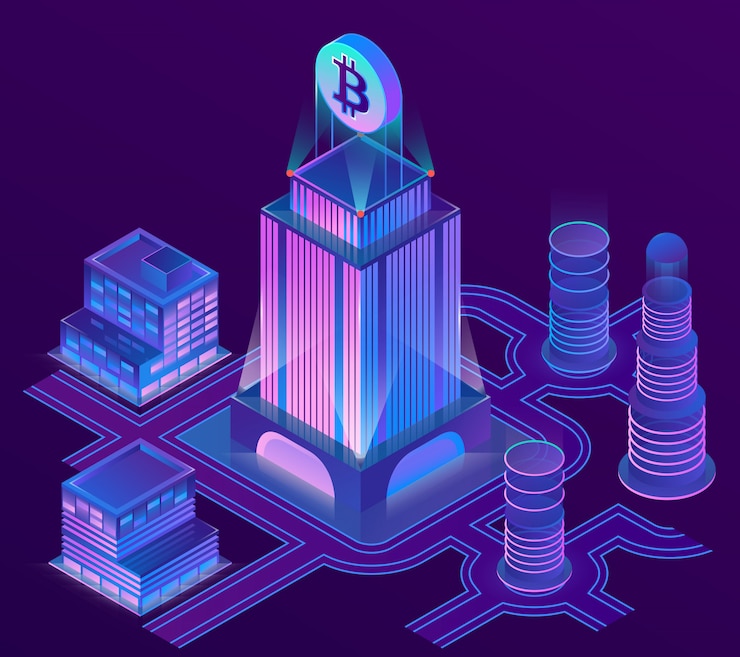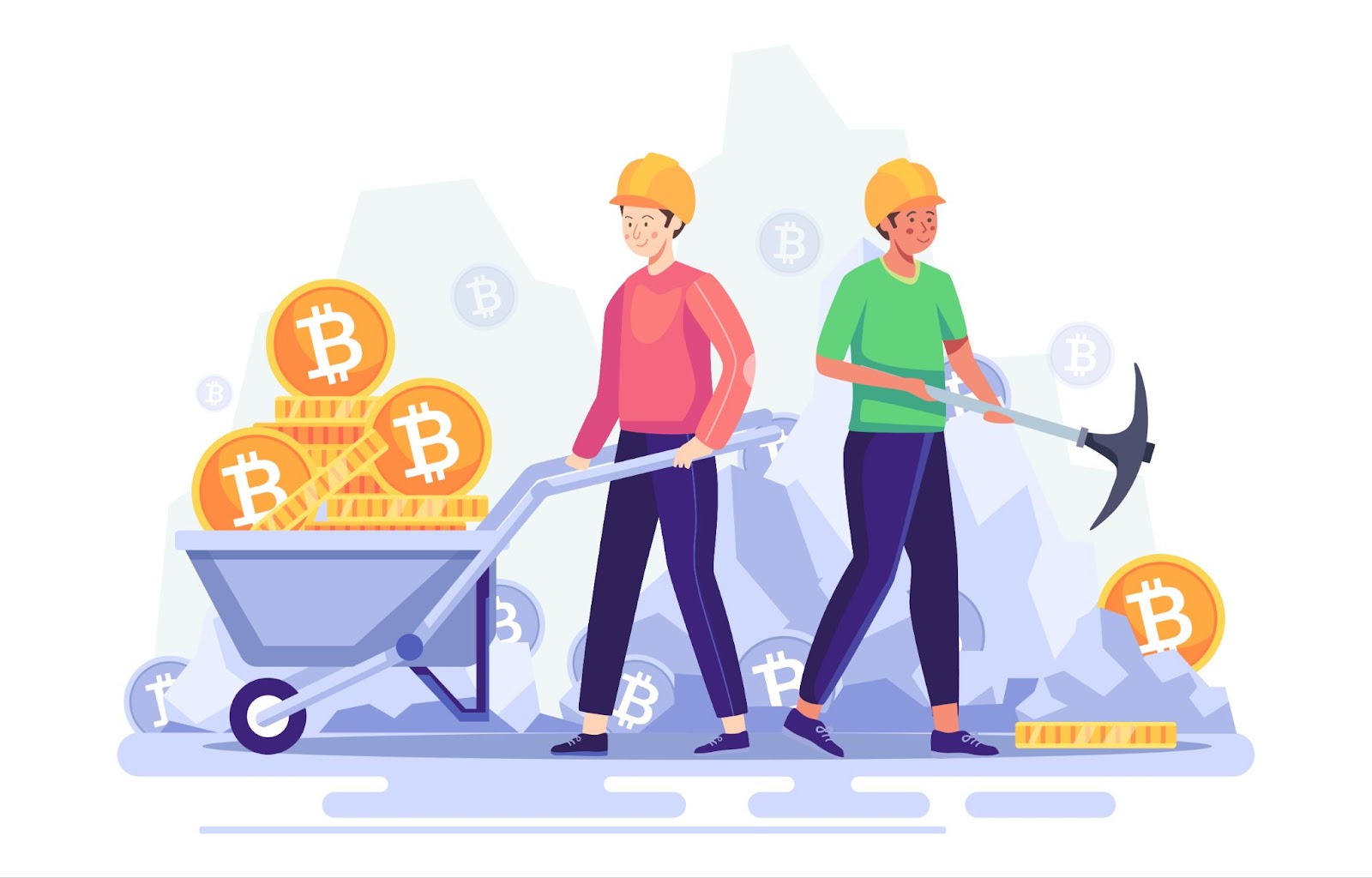Cryptocurrency mining, particularly through the proof-of-work mechanism, is a fascinating world of complex puzzles, where transactions are validated to earn those coveted digital rewards. But hey, evolution is the name of the game! Enter the realm of crypto mining pools – a savvy move where miners unite their powers, not just for efficiency but to skyrocket their profitability. It’s like a digital team-up where the rewards get bigger and the crypto game gets even more thrilling!
What Constitutes a Crypto Mining Pool?
A cryptocurrency mining pool is a collaboration of miners who pool their computing power to tackle the complex algorithms that determine cryptocurrency mining. Rather than going it alone, joining a pool allows for a collective effort to mine blocks and distribute rewards based on individual contributions.
Instead of mining individually, which can be less profitable due to the high level of mining complexity, miners pool their resources and share the rewards based on the computing power invested.
Here’s how it typically works:
- Joining a Pool: Miners join a mining pool by connecting their mining hardware (like ASICs or GPUs) to the pool’s server;
- Collective Mining: The pool distributes complex mathematical problems among the connected miners. When one miner in the pool solves a problem, the solution is shared among all participants;
- Reward Sharing: Once a block is successfully mined, the reward is distributed among the pool members based on the amount of computational power they contributed. This is usually proportional to the work each miner has done;
- Pool Fees: Mining pools often charge a small fee (usually a percentage of the earnings) for facilitating the mining process. This fee helps cover the costs of maintaining the pool.
Mining pools offer more consistent payouts compared to solo mining, where finding a block might take a long time. They reduce the variance in earnings, making mining more predictable, especially for small-scale miners.
Popular crypto mining pools include Slush Pool, F2Pool, Poolin, and many others. Miners often choose pools based on factors like fees, reliability, user interface, and the cryptocurrencies they support.
Unveiling the Benefits
Mining pools offer several advantages for cryptocurrency miners:
- Steady Income: Mining in a pool ensures a more regular and predictable income compared to solo mining. As the pool collectively works on solving blocks, rewards are shared among participants based on their contributed computational power. This steadies the income flow, reducing the variability in earnings;
- Increased Chance of Rewards: Since mining pools combine computational power, they collectively have a higher chance of successfully mining blocks. This improves the chances of earning block rewards compared to mining alone, especially for smaller miners who might find it challenging to compete against larger mining operations;
- Less Variance: Solo mining can result in extended periods without earning any rewards due to the unpredictability of finding blocks. Pool mining smooths out these fluctuations by consistently distributing smaller, more frequent rewards;
- Reduced Downtime: Mining pools generally have better uptime and stability compared to individual setups. If a miner’s hardware encounters issues or goes offline, the mining pool’s overall performance is not significantly affected as other miners continue the collective work;
- Access to Resources: Joining a pool allows miners with less powerful hardware to contribute to the collective computational power. This grants them access to rewards they might not have obtained while mining alone;
- Diversification of Coins: Some pools support mining multiple cryptocurrencies simultaneously or allow miners to switch between different coins. This flexibility enables miners to take advantage of fluctuations in the market and mine the most profitable coins at any given time.
However, it’s essential to consider potential downsides such as pool fees, which can reduce individual earnings, and the reliance on the pool’s stability and integrity. Additionally, some pools may have a minimum payout threshold that needs to be reached before receiving rewards.
Choosing the right pool involves considering factors like the pool’s reputation, fees, payout methods, supported cryptocurrencies, and the user interface.
Selecting the Ideal Crypto Mining Pool & Hardware Requirements
Choosing the right pool demands careful consideration of multiple factors:
- Reputation and Authenticity: Prioritize pools with positive reviews and authenticate the credibility of feedback;
- Pool Size and Hash Rate: Larger pools boast higher hash rates, augmenting the chances of block mining;
- Fee Structures and Payment Schedules: Assess fees and payment timelines to optimize profitability;
- Stay Informed: Utilize tools like Crypto Reach for up-to-date cryptocurrency news and trends.
In terms of hardware, ASICs (application-specific integrated circuits) reign supreme due to their efficiency in hash calculations and minimized energy consumption, bolstering profitability.
Notable Crypto Mining Pools and Payment Models
There are several notable crypto mining pools, each with its own payment models and unique features. Here are some of them along with their payment models:
| Mining Pool | Payment Model |
|---|---|
| Slush Pool | Score-based system (Slush’s Pool algorithm). |
| F2Pool | PPS (Pay Per Share) and PPS+ with additional variance payouts. |
| Poolin | PPS+ (Pay Per Share Plus), PPLNS (Pay Per Last N Shares), FPPS (Full Pay Per Share). |
| Antpool | PPS (Pay Per Share), PPLNS (Pay Per Last N Shares), and Solo mode. |
| BTC.com | PPS (Pay Per Share) and PPLNS (Pay Per Last N Shares). |
| ViaBTC | PPS+ (Pay Per Share Plus) and PPLNS (Pay Per Last N Shares). |
Payment models vary in terms of how rewards are distributed among participants. Some prioritize consistency (like PPS), offering a fixed payout for each share contributed, while others like PPLNS provide payouts based on the number of shares contributed during a specific timeframe.
When choosing a mining pool, consider factors such as the fee structure, supported cryptocurrencies, reliability, user interface, and the pool’s reputation within the mining community. Additionally, keep in mind the payout thresholds and withdrawal options offered by the pool.
Payment Methods
Payment methods in crypto mining pools refer to how miners receive their earnings or rewards. Here are some common payment methods used by mining pools:
- Pay Per Share (PPS): Miners receive a fixed payout for each share they contribute to the mining pool’s work, regardless of whether the pool successfully mines a block or not. It offers a consistent payout for miners;
- Pay Per Last N Shares (PPLNS): Miners are rewarded based on the number of shares they contributed to finding the last block. Payouts depend on the pool’s block finding frequency and can vary based on the pool’s luck in finding blocks;
- Score-Based Systems: These systems evaluate a miner’s contribution by assigning a score to each share contributed. Rewards are then distributed based on this score, which considers the miner’s long-term participation;
- Pay Per Share Plus (PPS+): A variation of PPS that offers additional rewards for miners to compensate for pool luck or variance. Miners receive a standard payout per share plus an additional bonus to cover fluctuations;
- Full Pay Per Share (FPPS): Similar to PPS, but includes additional transaction fees as part of the block reward. Miners receive the full block reward plus transaction fees;
- Solo Mining: Miners work individually without joining a pool. If they successfully mine a block, they receive the full block reward. However, solo mining requires substantial computational power and luck.
The choice of payment method can significantly impact a miner’s earnings and risk exposure. Some methods offer steadier payouts but might have lower rewards in the long run, while others offer higher potential earnings but come with more variability. Miners often choose payment methods based on their risk tolerance, computational power, and long-term earning goals.
Understanding Pool Dynamics and Associated Risks
Understanding the dynamics and risks associated with crypto mining pools is crucial for anyone considering participation. Here’s an in-depth look at these aspects:
Pool Dynamics:
- Collective Mining: Mining pools combine computational resources from multiple miners to increase the likelihood of successfully mining blocks and earning rewards. The collective power enhances the chances of regular payouts;
- Reward Distribution: Pools use various payment models to distribute rewards among miners, such as PPS, PPLNS, or score-based systems. Each model has its own way of rewarding participants based on their contributions;
- Pool Fees: Mining pools often charge fees for their services, usually a percentage of the rewards earned by miners. These fees cover operational costs and maintenance of the pool;
- Mining Difficulty and Variance: The pool’s performance can vary due to fluctuations in mining difficulty and luck in finding blocks. Miners might experience periods of high and low rewards due to these variations.
Associated Risks:
- Centralization Risks: Large mining pools can lead to centralization, where a few pools control a significant portion of the network’s hash rate. This concentration can pose a risk to the network’s decentralization and security;
- Pool Reliability: Pools may face downtime or technical issues, affecting miners’ ability to contribute and receive rewards. Reliance on the pool’s stability is a potential risk.
- Security Concerns: Malicious actors might attempt to compromise or attack mining pools, leading to potential loss of funds or disruptions in mining operations;
- Market and Regulatory Risks: Changes in cryptocurrency regulations or market conditions can impact the profitability of mining and affect the rewards received from pools;
- Pool Hopping: Miners might engage in “pool hopping,” switching between pools to take advantage of payment models. This behavior can disrupt pool dynamics and affect overall payouts.
Mitigation Strategies:
- Diversification: Participate in multiple pools to spread risk and avoid dependency on a single pool’s performance;
- Research and Monitoring: Regularly research and monitor the performance, reputation, and fees of different pools to make informed decisions;
- Security Measures: Implement strong security practices, such as using secure wallets and ensuring the pool has robust security protocols;
- Network Participation: Actively engage in the cryptocurrency community to stay informed about potential regulatory changes or network developments that might affect mining.
Understanding pool dynamics, risks, and employing suitable mitigation strategies is crucial for miners to navigate the complex landscape of crypto mining pools and maximize their earning potential while minimizing potential downsides.
Conclusion
Joining a crypto mining pool requires thorough understanding and caution; educate yourself on its intricacies, evaluate the risks, and choose reputable pools to maximize profits while mitigating potential setbacks ding a block to the blockchain.
FAQ
A crypto mining pool is a collective effort where miners combine their computing powers to maximize rewards by jointly solving intricate hash algorithms in cryptocurrency mining.
Multiple miners share their computing power to collectively mine cryptocurrencies. They then distribute the profits.



